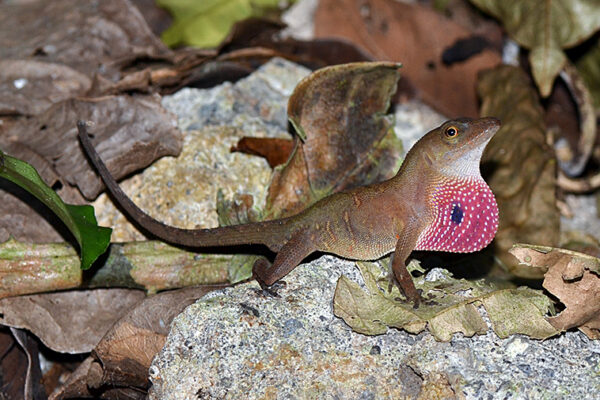$1.2M grant to study evolution of Central American lizards
A research team led by Jonathan Losos, the William H. Danforth Distinguished Professor and professor of biology in Arts & Sciences at Washington University in St. Louis, was awarded $1.2 million for a CRISPR-based gene editing study of Central American lizards.
Grain traits traced to ‘dark matter’ of rice genome
Researchers from Washington University in St. Louis and the Chinese Academy of Agricultural Sciences discovered that rice domestication relied on selection for traits determined by a poorly understood portion of the rice genome.
$60 million to study common diseases
The McDonnell Genome Institute at Washington University School of Medicine in St. Louis will receive $60 million from the National Institutes of Health (NIH) to study the genetics of common diseases, such as heart disease, diabetes, stroke, autism and epilepsy.
Scientists unveil map of human epigenomes in effort to fight disease
The genome is the instruction book for life. But reading that instruction book and carrying out its
directives are controlled by the epigenome, which attaches chemical markers to DNA to
activate or silence genes. For the first time, researchers at the School of Medicine and elsewhere have assembled a comprehensive map of the human epigenome.
The cat’s meow: Genome reveals clues to domestication
Cats and humans have shared the same households for at least 9,000 years, but we still know very little about how our feline friends became domesticated. An analysis of the cat genome by School of Medicine researchers reveals some surprising clues. Pictured is a blue Abyssinian cat.
Decoded: DNA of blood-sucking worm that infects world’s poor
Scientists have decoded the genome of an intestinal parasite that causes hookworm, an illness that afflicts an estimated 700 million of the world’s poor. The parasitic worm lives in the soil and enters the body through the feet. By feeding on victims’ blood, the worms cause anemia and, in children, stunted growth and learning problems.
Elephant shark genome decoded
An international team of researchers has sequenced the genome of the elephant shark, a curious-looking fish with a snout that resembles the end of an elephant’s trunk. Pictured is lead researcher Byrappa Venkatesh, PhD, of A*STAR in Singapore, holding an elephant shark.
Genetic errors identified in 12 major cancer types
By analyzing the DNA in more than 3,000 tumors, scientists led by Li Ding, PhD, at The Genome Institute have identified 127 repeatedly mutated genes that likely drive the growth of a range of cancers in the body. The discovery sets the stage for devising new diagnostic tools and more personalized cancer treatments.
Fish prone to melanoma get DNA decoded
Scientists have decoded the genome of the platyfish, a cousin of the guppy and a popular choice for home aquariums. Scientists are interested in the fish because they tend to develop melanomas along the tail and fin.
Ancient sea lamprey gets DNA decoded
A large team of scientists has decoded the genome of a sea lamprey – one of the few ancient, jawless species of vertebrates that has survived through the modern era.
View More Stories



